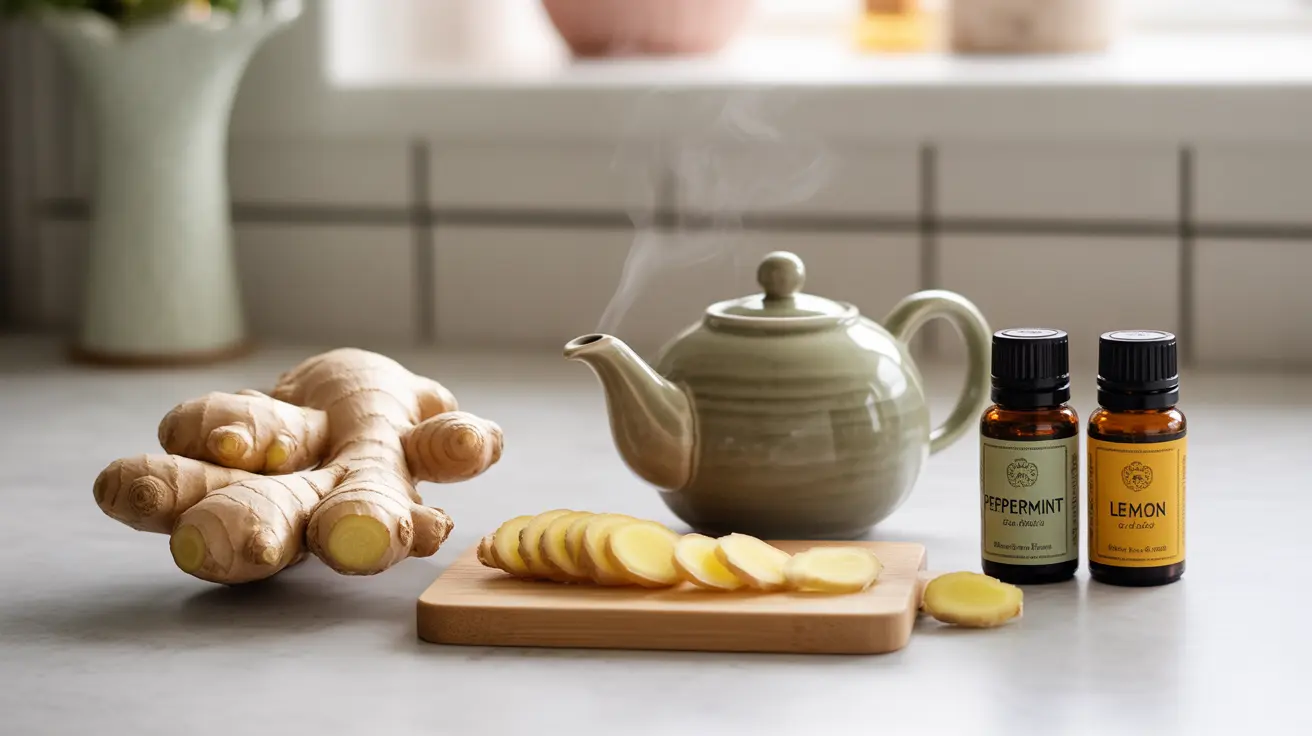Feeling nauseous can significantly impact your daily life, but numerous proven natural remedies can provide quick and effective relief. Whether you're experiencing morning sickness, motion sickness, or nausea from other causes, understanding these evidence-based solutions can help you manage symptoms more effectively.
In this comprehensive guide, we'll explore various natural approaches to nausea relief, from traditional remedies to lifestyle modifications, helping you find the most suitable options for your situation.
The Power of Ginger for Nausea Management
Ginger stands out as one of nature's most potent remedies for nausea relief. This ancient root contains active compounds called gingerols and shogaols that help regulate digestion and reduce feelings of queasiness.
- Fresh ginger root tea
- Ginger capsules
- Crystallized ginger
- Ginger lozenges
- Natural ginger ale (with real ginger)
Proper Ginger Dosage for Safety and Effectiveness
While ginger is generally safe, proper dosing is essential for optimal results. Most studies suggest that 1-1.5 grams of ginger per day, divided into several doses, provides effective nausea relief while minimizing potential side effects.
Aromatherapy Approaches to Nausea Relief
Essential oils can offer quick relief from nausea when used properly. Peppermint and lemon oils are particularly effective due to their natural compounds that help ease digestive discomfort and reduce nauseous feelings.
Using Essential Oils Safely
- Add 2-3 drops to a diffuser
- Inhale directly from the bottle (keeping the oil away from your nose)
- Apply diluted oil to pressure points
- Use an aromatherapy inhaler
Dietary and Lifestyle Modifications
Simple changes to your eating habits and daily routine can significantly impact nausea symptoms:
- Eat smaller, frequent meals
- Choose bland, easily digestible foods
- Stay hydrated with clear fluids
- Avoid strong odors and triggers
- Practice proper posture after meals
- Get fresh air regularly
Acupressure and Acupuncture Solutions
Traditional Chinese medicine offers effective approaches to nausea relief through specific pressure points and needle techniques. The P6 (Nei Guan) point, located on the inner wrist, is particularly well-known for its anti-nausea effects.
Understanding Pressure Point Therapy
- Using acupressure wristbands
- Applying gentle pressure with your fingers
- Seeking professional acupuncture treatment
Frequently Asked Questions
What are the most effective natural remedies for nausea relief? The most effective natural remedies include ginger consumption, aromatherapy with peppermint or lemon essential oils, acupressure at the P6 point, and maintaining proper hydration with clear fluids. These methods have been supported by scientific research for their anti-nausea properties.
How much ginger should I take daily to help reduce nausea safely? The recommended daily dosage of ginger for nausea relief is 1-1.5 grams, divided into several doses throughout the day. This can be consumed as tea, capsules, or crystallized ginger. Exceeding this amount may cause stomach discomfort.
Can aromatherapy with peppermint or lemon really help relieve nausea quickly? Yes, aromatherapy with peppermint or lemon essential oils can provide quick nausea relief. These oils work through the olfactory system to calm the stomach and reduce nauseous feelings. Studies have shown significant effectiveness, particularly when used at the first sign of nausea.
What lifestyle and diet changes can prevent or ease nausea symptoms? Key lifestyle changes include eating smaller, more frequent meals, avoiding trigger foods and strong odors, staying upright after eating, getting regular fresh air, and maintaining proper hydration. Choosing bland, easily digestible foods can also help prevent and manage nausea.
How do acupuncture and acupressure work to reduce nausea, and are they safe? Acupuncture and acupressure work by stimulating specific pressure points that help regulate digestive function and reduce nausea. The P6 point is particularly effective. Both methods are considered safe when performed correctly, either by a qualified practitioner or through proper self-administration of acupressure techniques.




